Godox XPro-F Trigger Review – FUJIFILM
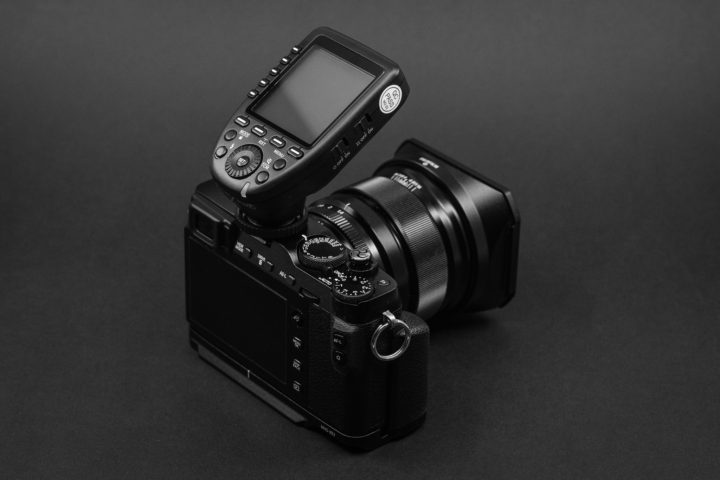
Godox XPro-F Trigger Review for Fujfilm
GUEST POST FEATURE
Write Your Articles Directly On FujiRumors!
Guest Post by The Overrated Photographer. You can follow him on instagram or on his website
Introduction
The Godox XPro-F has finally hit the market and I managed to get my hands on one of the first ones from Godox. These are my pure unadulterated unbiased thoughts, with the exception of my perceptions of Godox to date which have been largely positive.
Who is Godox?
I wrote a previous article about how Godox has been shaking up the market with their wireless speedlight and strobes. With limited lighting support For Fujifilm, I’ve noticed that Godox receive a lot of support in the Fujifilm market and I think products like the AD600 Pro will only serve to improve this in time, particularly as it starts to cater for the higher end professional market that might have only considered Profoto, Elinchrom or Broncolor.
For those who don’t know Godox, they are a Chinese based manufacturer of lighting goods. They make a variety of products including speedlight, strobes and modifiers. In the past, lighting goods from China were typically equated to “cheap and unreliable” but with the quality of the goods coming out of companies like Yongnuo and Godox, they’ve earned the respect of photographers in the market and many professionals have started to support them. I have the TT350F, TT685F and two AD200‘s. My experience with them have been very good and I have no hesitation in recommending them.
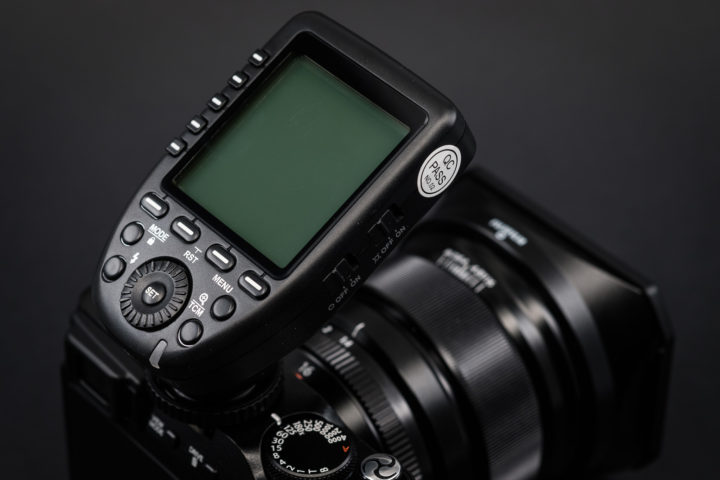
Ordering and shipping
I picked up my XPro-F directly from Godox.shop website because they were the first to get stock and I wanted to get my hands on the trigger as quickly as possible. Typically I buy from a local retailer in Australia. I would recommend you stay local (if possible) as having the ability to take something back to a brick and mortar store has definite benefits if you have an issue. Contrary to what it sounds like, Godox.shop is Hong Kong based and not the same company as Godox itself.
I opted for express shipping with the trigger. Apparently express shipping is 5-7 days and with my order time placed at 11pm Friday (Australian time), I was hoping for delivery by the following Friday. I was notified my trigger had shipped a couple of hours later, so I was a little irate when I received my shipping notification the following Wednesday and discovered my goods were only due to be collected at 7pm that day, hardly express shipping worthy and hardly in line with my shipping notification I had received.
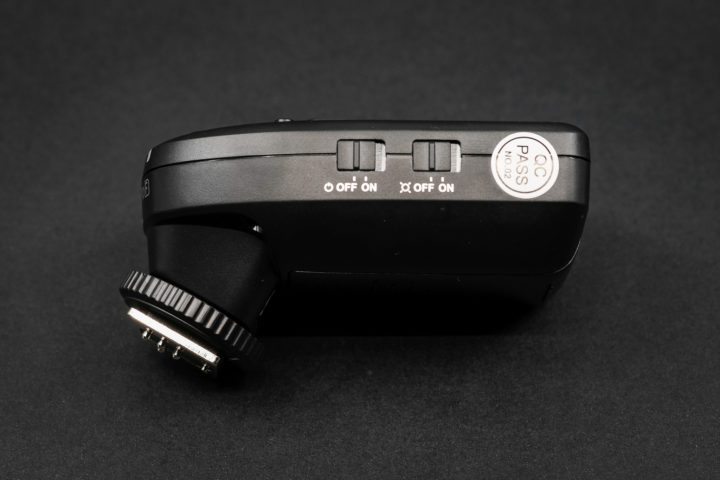
Unfortunately, my package also got delayed in customs. I thought they may have suspected the parcel was undervalued due to the XPro name (and potentially it being an Xpro camera) as Australia have a $1000 limitation on important before you are forced to pay duties. The actual problem turned out to be the name. As a firearm free country (you can’t own a firearm for self defense purposes, only sporting), the word trigger caused a red flag with Australian customs. This resulted in them checking the contents, requesting a copy of the invoice from the supplier etc. After providing some details, confirming it wasn’t related to firearms, and an inspection of the parcel, the trigger finally made it’s way to me on Wednesday, more than 10 days after the order, in part due to the delays from Godox.shop and in part due to the customs. They may want to use the word “transmitter” instead of “trigger” if they ship to Australia.
Packaging and construction
Packaging is fairly basic but not unreasonable given the price tag. The trigger is provided with manuals and a cleaning cloth. I think the cleaning cloth is a nice touch, but unnecessary. I would have found a small soft case far more useful, even without padding. I’ll see if I can locate something suitable for this as a way to protect it in my bag, or perhaps use one of my fujifilm lens soft cases.
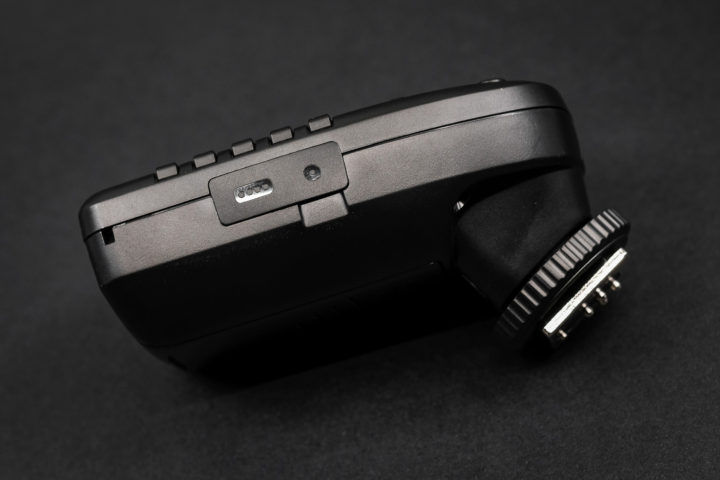
It’s nice to see they have gone down the path of the USB-C although this may prove problematic for those without USB-C compatible devices as they do not provide a cable with it. If you plan on updating this, make sure you have a cable on hand. Despite all the electronics we have in our household, it seems that we have no devices that require a USB-C sync cable so this will be our first. It had to happen eventually.
I’ll cover more with my gripes on the old X1 trigger later in the review, but one of the gripes I had with the previous generation trigger was the construction quality. The construction almost felt like it came out of a different factory to the Godox speedlights, and the battery door felt like it would break when you closed it. The quality of the plastics had a much cheaper feel to them than the Godox speed lights.
The XPro-F is an incredible improvement on the X1T. The plastic is better quality, the quality of the buttons and dials are great. The screw to attach to the hotshoe is also better but not perfect. I’m still not a fan of the screw in style hotshoe attachment, I prefer the latch method of the Nikon speedlights. I would alos have preferred the battery door to be attached permanent to the trigger as these things can easily fall off and get lost.
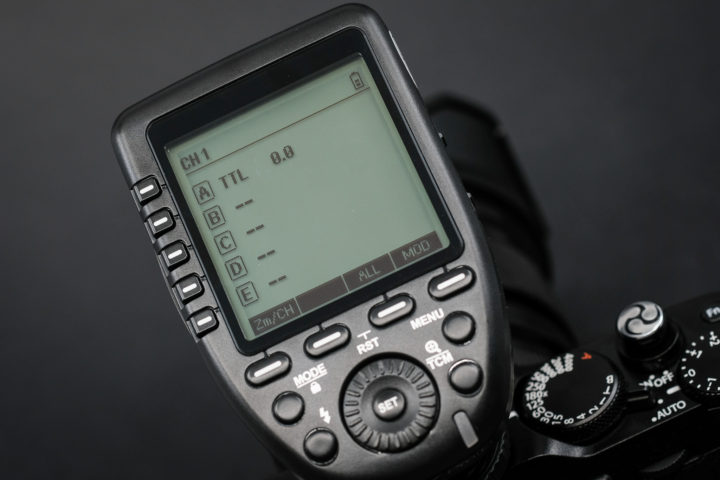
Using the XPro-F
As mentioned earlier, my impressions of the Godox gear to date has been great, with the exception for the trigger.
- The flat profile of the X1 trigger limited access to the dials on the Fujifilm cameras and I found the Yongnuo vertical layout far easier to work with.
- Usability was bad. It was a difficult to find the different options you needed with the configuration and button layout, and doing simple things like changing the flash output required more steps than it should have. It worked well, but it was far from perfect.
- The dial was terrible and hard to adjust accurately, you often went too far or battled to get to the value you wanted. If you scrolled through groups, you might accidentally go from A to C instead of B. It was also possible to accidentally change the values when you lifted the flash to your face because it was in line with your forehead.
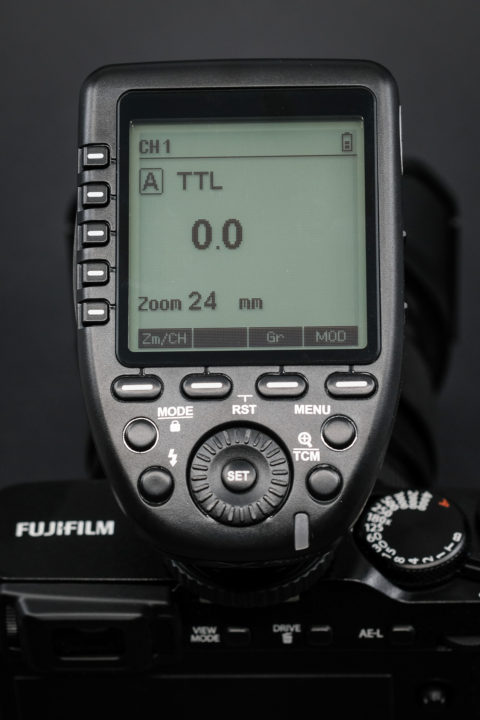
So how does the XPro-F compare to the original and have Godox learnt some lessons From their mistakes?
The construction I’ve covered, so yes, with the exception of the small items I covered, they hit the nail on the head.
The usability is where the XPro-F really shines compared to the old model. The large screen makes it far easier to work with and change the settings. Having dedicated buttons for each group is far better way to work and makes it a far better experience. To adjust the power up for one of the groups is as simple as tap the group button, rotate the dial. It honestly doesn’t get harder than that. Compare it to the same process on the X1 where you look at screen, check which group is in the middle just in case you bumped the dial which was too loose. Press the GR button and then then rotate the dial. Press the GR button again so the don’t accidently change it and on to the next. Do this a couple of times and it got extremely annoying.
If you are only using one group, you can use the zoom to set it up so only a single group shows on the screen, nice for those occasions when you are only working with one light.
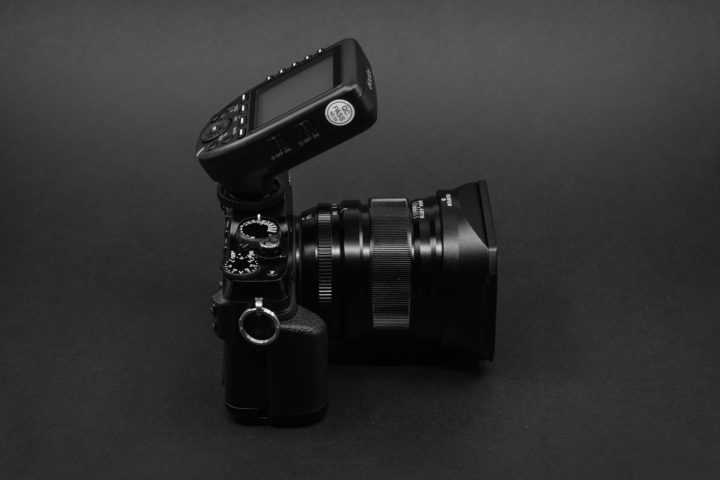
The dial offered on the Xpro-F is exactly the same style as the TT685 and works perfectly. Each click is solid and represents one third of a stop. To adjust the value of a group, tap on the group button, rotate the dial. To activate, deactivate or change from TTL to manual, tap on the group, tap on the X button and they rendered inactive.
Other nice touches include the ability to select multiple groups and adjust them up at the same time. I. e. F group A is on +1 and group B is one -1, by selecting all you can adjust both up or down by 3rd stop increments.
You can use TCM mode to set the initial exposure with TTL and then it will retain the current lighting settings in manual mode. This reduces the requirement for light meters. For most people working in their own studios, this won’t be an issue, but if you’re working in dynamic environments, this will simplify your workflow. You will need to let it know which device that you are using to configure TCM. I.e. AD600, AD200, speedlight.
There are some additional options hidden away in the menu settings, you can adjust the transmitter range, setup unique ID’s to avoid other was triggering your lights, set the beep an or off, setup single or a multiple transmitters etc.
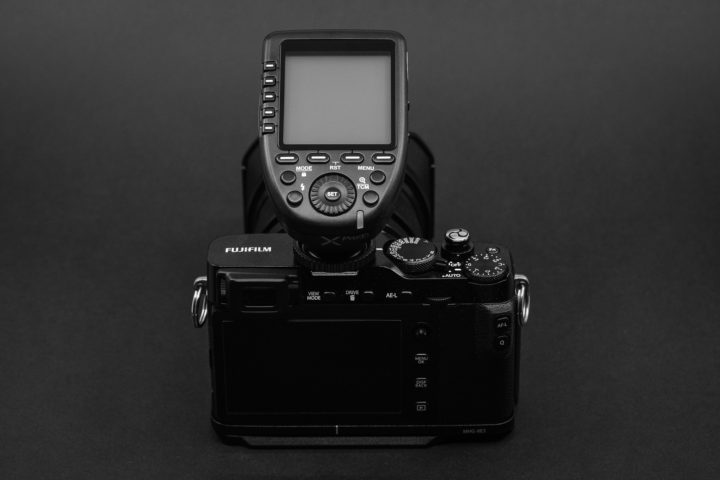
What could they improve?
Is it perfect? Unfortunately not, but most of the issues are minor and can be rectified through firmware:
I mentioned the screw layout of the hotshoe attachment and the battery door so I won’t cover those again.
- Switching on and off groups could be simplified for those photographers who do this. I’m not sure what would be the best way to do this, maybe a double tap of each group button, but there would be options depending how the implement the firmware.
- There is no way to adjust modelling lights individually. It’s an all or nothing thing so having the ability to select the group and switch on off the modelling lights individually would be great. Currently when you select a light, the modelling light option disappears so it would be quite easy to allow users to adjust these individually.
- Adjustments are only provided in one third stop increments in manual mode. There are many users who will feel one tenth stop adjustments give a greater degree of flexibility with strobes. The new AD600 Pro also seems to be provided with one third stop increments which is a surprise.
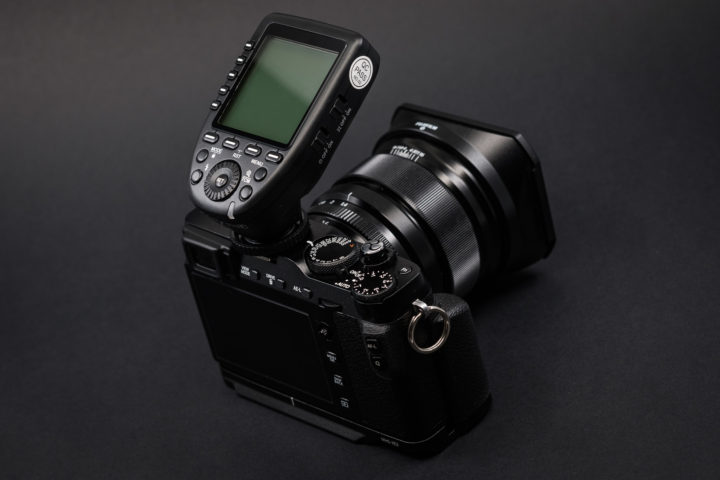
Conclusion
I think Godox have hit the mark with this trigger and I think it’s something that will shift some of the potential buyers who were unhappy with the previous generation trigger.
It seems like they have put a lot of work into this design and this reflects in a trigger that is head and shoulders above the old X1. If you were sitting on the fence, it’s probably the right time to consider the move. If it’s still not good enough, the upcoming AD600 Pro might be enough to change that.

